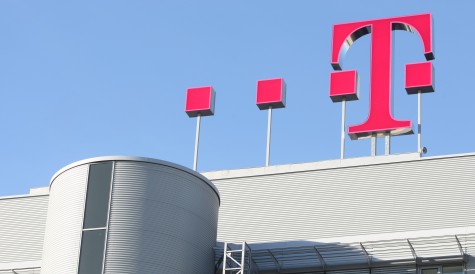Liberty Global’s access network roadmap revealed
 Liberty Global senior technologists Mark Burns and Ade Brittain used a presentation at the Cable Next Gen Europe event in London yesterday to reveal details of the cable giant’s access network technology roadmap for the next few years.
Liberty Global senior technologists Mark Burns and Ade Brittain used a presentation at the Cable Next Gen Europe event in London yesterday to reveal details of the cable giant’s access network technology roadmap for the next few years.
Mark Burns, HFC architect, who heads access network strategy roadmaps at Liberty Global, said that the company’s roadmap fell into ‘business as usual’ activities such as increasing bandwidth, investing in CCAP and investing in node segmentation, on one hand, and investment in new technologies including DOCSIS 3.1, a converged internet network, the creation of a distributed access architecture via investment in Remote PHY, and virtual segmentation of the network, on the other.
Burns said that Liberty is migrating its headend infrastructure to a single CCAP platform capable of delivering DOCSIS 3.1.
He said that the company’s plans for bandwidth expansion means upgrading bandwidth-constrained networks to 1.2GHz downstream., switching off analogue TV and FM radio to enable a higher split between downstream and upstream traffic, and improving encoding efficiencies for TV.
Burns said that the company is looking at Extended Spectrum DOCSIS – a technology that involves using Full Duplex DOCSIS chipsets to raise the spectrum ceiling occupied by upstream traffic to 492MHz or 684MHz while keeping upstream and downstream in separate blocks of spectrum – as an ‘innovation’ project – meaning that this technology is being evaluated but is not currently on the company’s roadmap.
Regarding prospects for the deployment of Full Duplex DOCSIS, the combination of downstream and upstream spectrum to enable symmetrical services, which requires networks to have no amplifiers between the node and the home – the so-called N+0 architecture – he said that Liberty’s current network topology ranges from N+1 to N+10, suggesting that migration is some way off. Liberty is however deploying fibre and using RFOG technology to address enterprise markets where symmetrical services may be called for.
Burns said that DOCSIS 3.1 is now live in a number of Liberty Global markets including Germany and Poland where the company is offering 1Gbps service. DOCSIS 3.1 will become to a ‘business as usual’ technology for the operator in the next reporting period, he said. He said that Liberty was currently testing Orthogonal Frequency Division Multiple Access (OFDMA) – a key part of the DOCSIS 3.1 spec for upstream bandwidth – and would deploy this by 2020.
He said that plans for a migration to a distributed access architecture or Converged Interconnect Network are underway, involving digitising analogue optics and replacing analogue fibre nodes with Remote PHY devices. The company is focusing on Remote PHY, which Burns said would be rolled out with second-generation silicon in a European-friendly compact node form-factor from 2020.
“This is about the convergence of multiple services onto a single network as well,” said Burns, who added that the Converged Interconnect Network will be deployed from 2019.
While shying away from the alternative Remote MACPHY technology promoted by a number of technologists, Burns said that Liberty Global is evaluating the more recent development of a flexible MAC approach that allows for the deployment of nodes that can be used for either Remote PHY or Remote MACPHY configurations.
Ade Brittain, senior manager, access network innovation at Liberty Global, accompanying Burns, said that the flexible MAC architecture “breaks down arguments and provides an opportunity to deploy technologies that match needs”. He said there was no need for “more debate between R-PHY and R-MACPHY”.
“We want to leverage all the work done on R-PHY that will allow operators to deploy the hardware that matches use cases with standardised north and southbound interfaces,” he said.
As a next step beyond Remote PHY, Burns said that Liberty Global is looking at the concept of the Virtual CCAP, moving away from purpose-built hardware to make use of commodity processors. “This gives improved agility and scalability and improved time to market,” he said, adding that the company is looking to initiate trials next year ahead of a potential rollout in 2020.
He said that virtual segmentation – the deployment of Ethernet over Coax technology to overcome the pain of pulling in new fibres when nodes are split, which involves considerable expense in terms of public works where fibre is buried – is also being considered.
Burns said that the combination of virtual segmentation with Remote PHY, establishing a point-to-point data link over existing coax cables – can enable operators to deliver faster broadband speeds without pulling in new fibre. He said Liberty Global had used this technique to deliver up to 7Gbps downstream and 1.7Gbps upstream depending on the quality of the plant in tests. The technology is at “an advanced stage of evaluation in Germany today and could be expanded to other markets”, he said.
Burns said Liberty was also evaluating Virtual PON, a technology that enables operators to move to PON as an overlay on their exisiting HFC network.
Other near term technology advances likely to be deployed include CCAP VOD, meaning converging VOD onto the CCAP platform being build by the company while still using DVB-C technology to deliver the on-demand stream. Burns said that as the operator moves to split nodes in the network it still needs to deliver VOD but wants to move that to CCAP to avoid investing in new Edge QAM devices, while paving the way for migration to IP VOD. “This will be rolled out shortly,” he said. Liberty Global already delivers IP VOD to its new advanced EOS set-top boxes, which are being deployed across its footprint.
Burns said that Liberty was also looking to migrate more TV channels to DOCSIS, moving the long tail of content to IPTV. “This is about reclaiming spectrum from DVB and moving it to DOCSIS and reducing the need for costly node splits,” he said.



